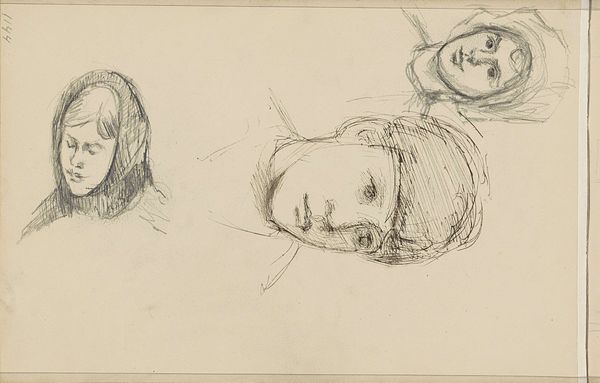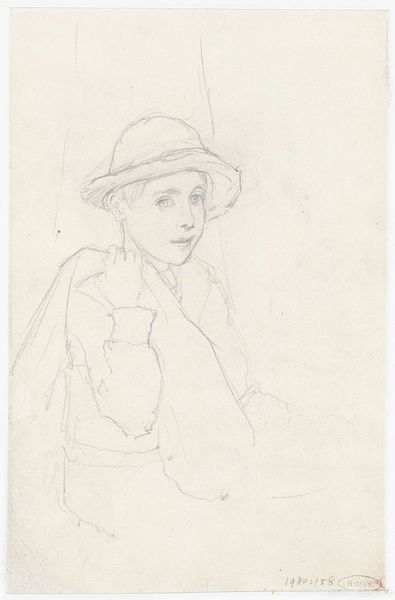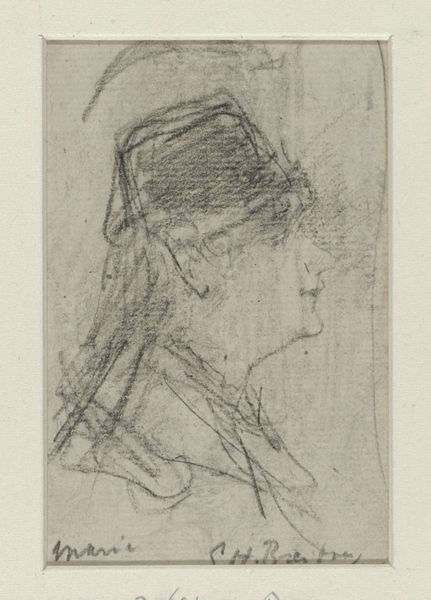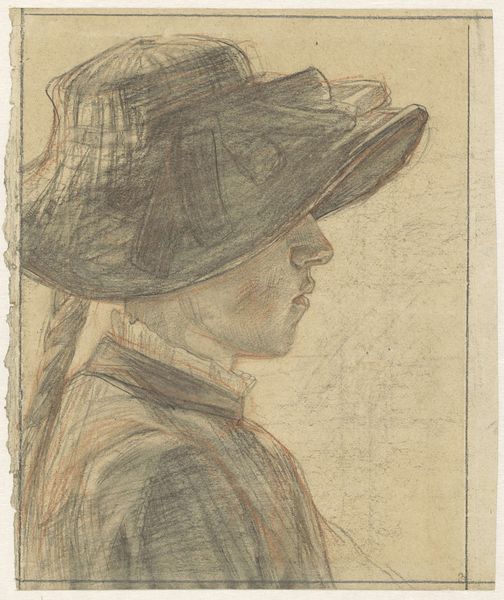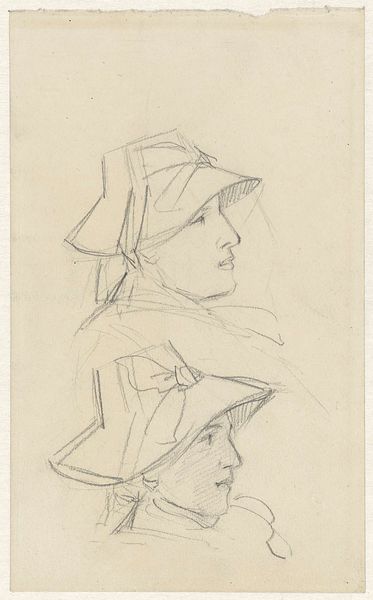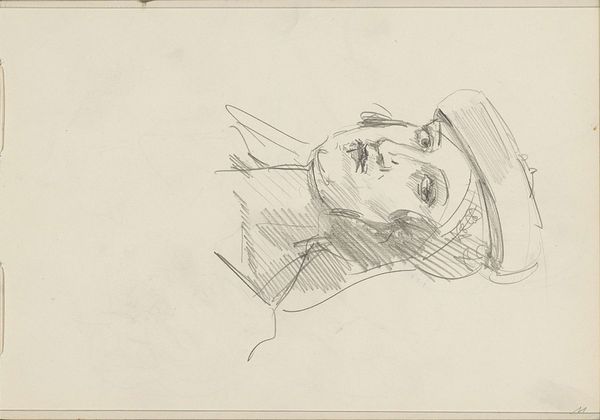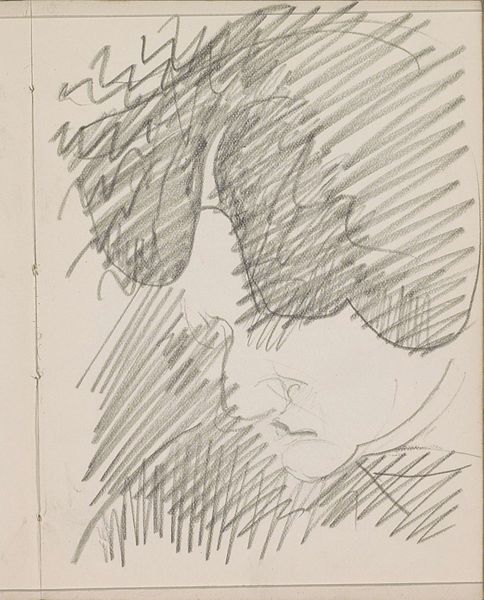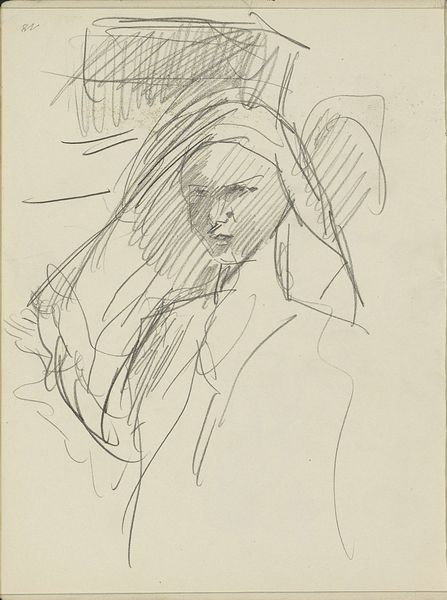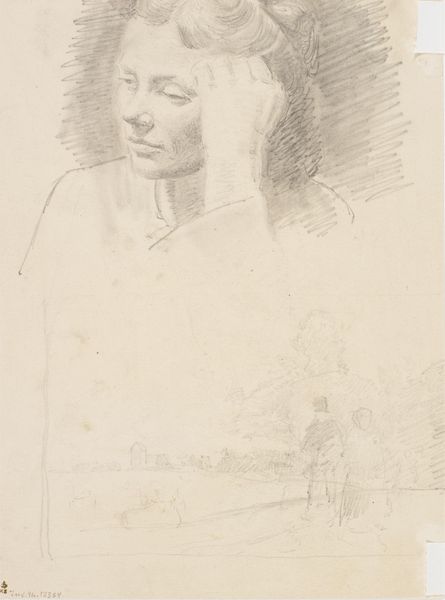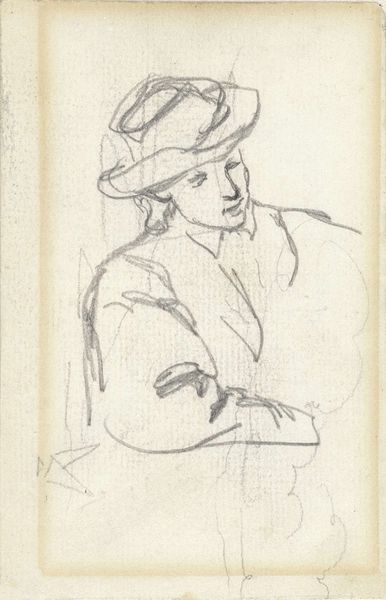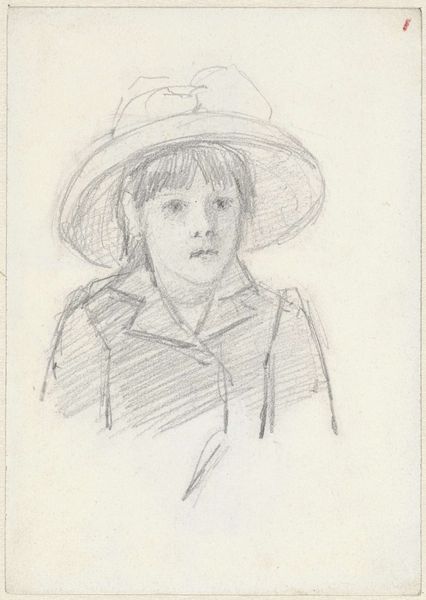
Hoofd van een jongetje met een hoed en schets van een hoofd 1834 - 1911
0:00
0:00
jozefisraels
Rijksmuseum
drawing, pencil
#
drawing
#
pencil sketch
#
figuration
#
pencil
#
academic-art
Dimensions: height 190 mm, width 290 mm
Copyright: Rijks Museum: Open Domain
Editor: Here we have Jozef Israëls' pencil drawing, "Head of a Young Boy with a Hat and Sketch of a Head," likely created between 1834 and 1911. It feels very intimate, a glimpse into the artist's process. What do you see in the composition, the arrangement of the two sketches? Curator: The placement is deliberate. Note how the assured, clearly defined lines of the upper portrait contrast sharply with the looser, more ethereal quality of the sketch below. The hat acts as a strong, framing device, containing the boy’s gaze which looks upward, creating a visual pathway that our eyes instinctively follow. Editor: So the crisp lines guide us, while the hazier sketch invites us to linger and imagine? Curator: Precisely. Consider the economy of line throughout. Israëls isn't aiming for photorealism, but rather a distillation of form, an essence. The hatched shading around the boy's face defines structure with impressive efficiency. Note how he suggests the curve of the cheekbone and the depth of the hat's brim with so few marks. Editor: It's incredible how much he conveys with so little! But why two heads on one sheet? Is it a study in different styles? Curator: More likely, a practice sheet. A Formalist reading encourages us to appreciate the juxtaposition. Are these separate sketches or two takes on the same image? The lack of resolution of the second image keeps our attention firmly focused on the lines and volume in the top portrait. This gives a compositional 'weight' to that element. Do you see that relationship between the form and content? Editor: Absolutely. The contrast highlights the finished versus the potential. It makes the visible even more so. Curator: And how form and process affect that visibility. It is through its constituent parts we understand the artistic intention. Editor: I see now how analyzing the composition unlocks new layers of meaning, transforming what I initially saw as just a preliminary drawing into a powerful study in artistic form and technique. Thanks for revealing those layers to me. Curator: Indeed, it encourages a heightened appreciation of the artistic choices that construct an image’s fundamental identity.
Comments
No comments
Be the first to comment and join the conversation on the ultimate creative platform.
